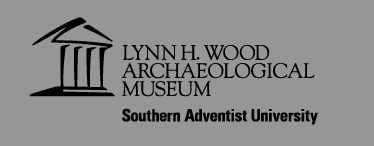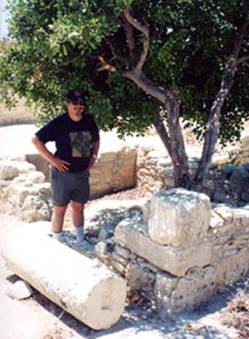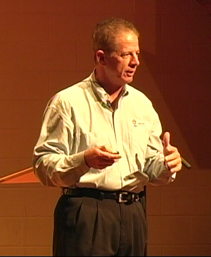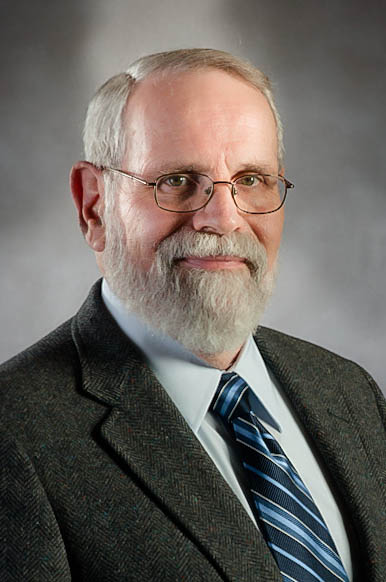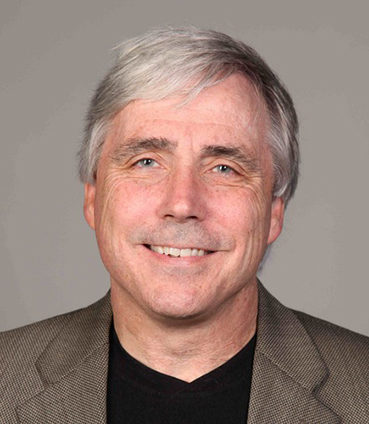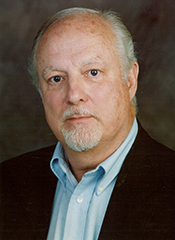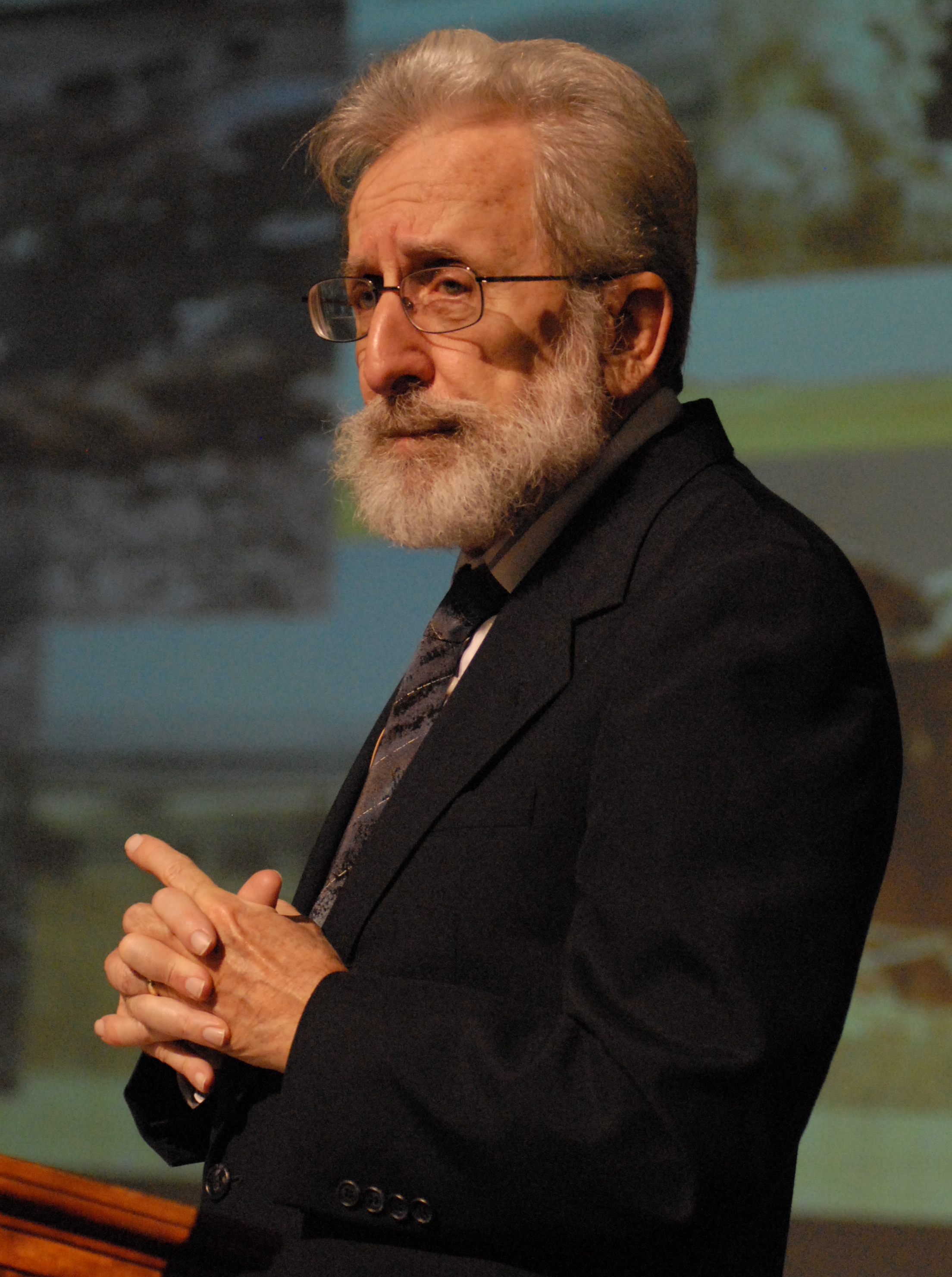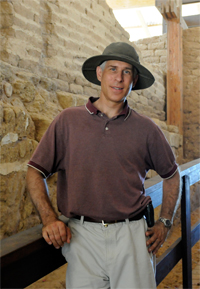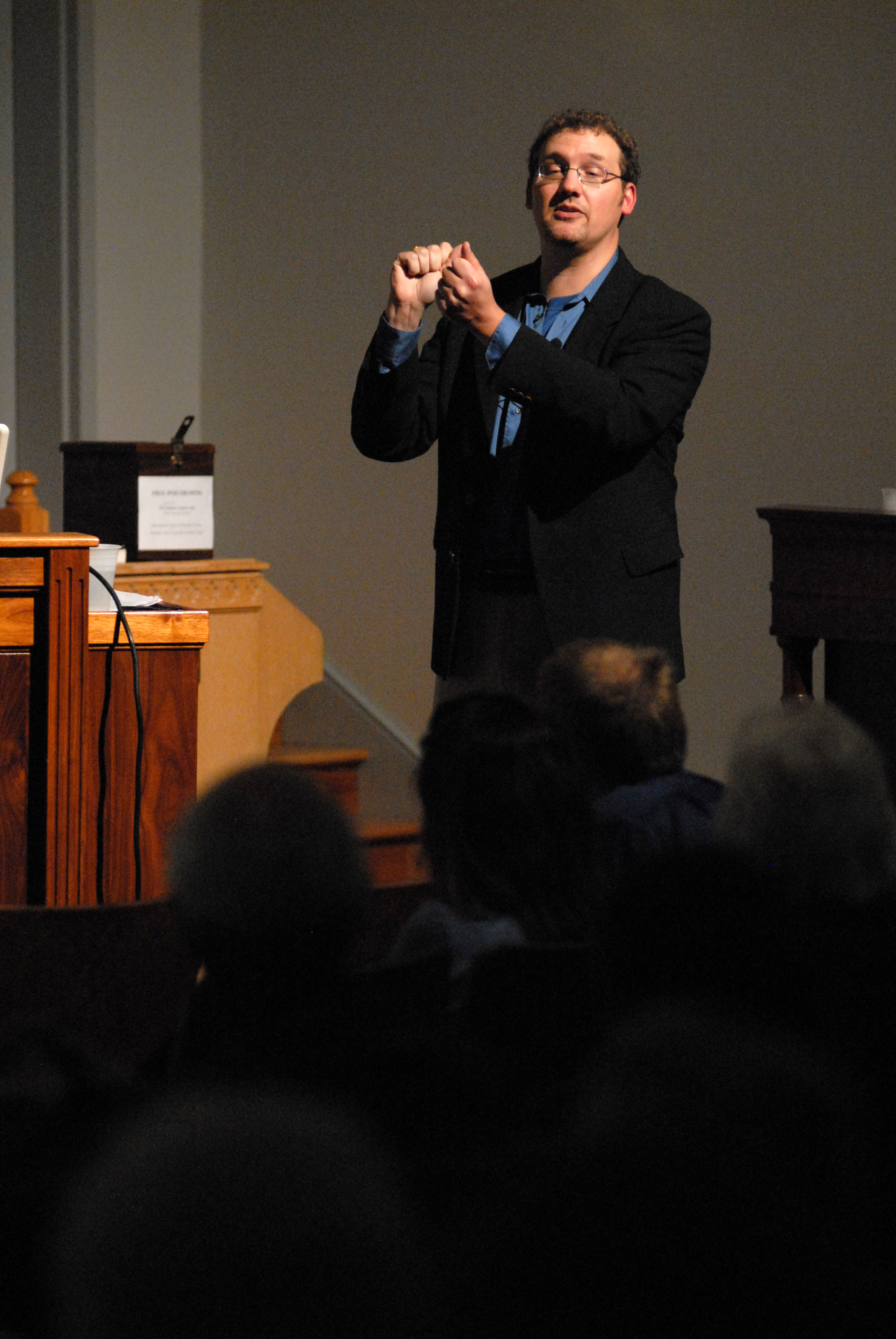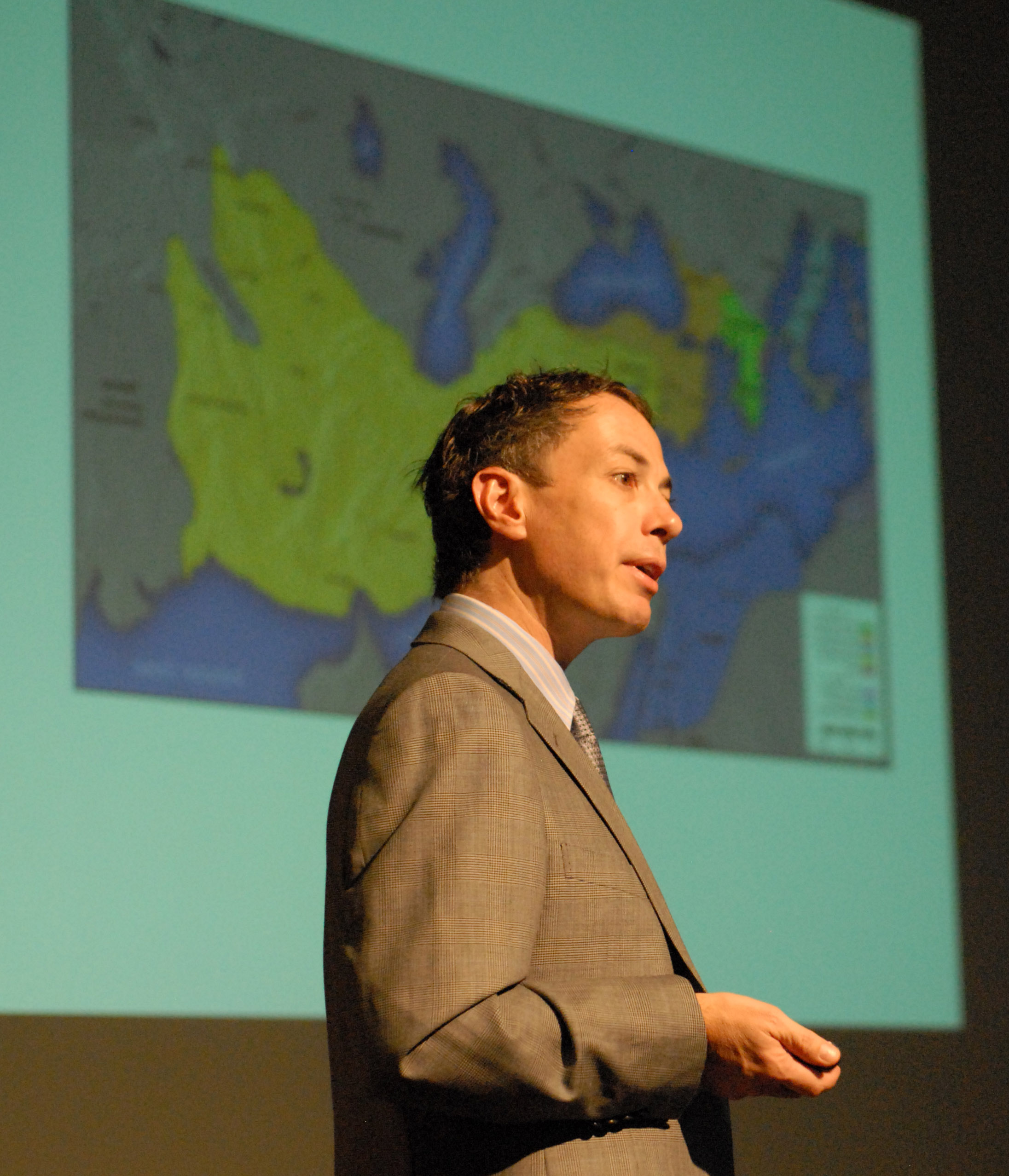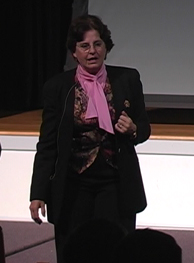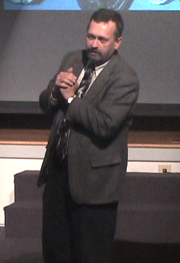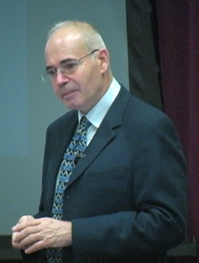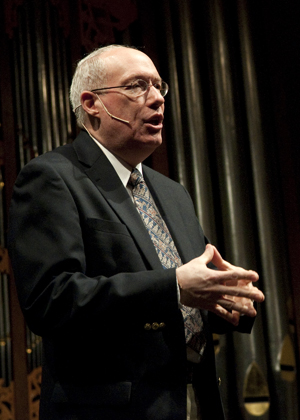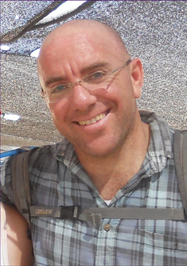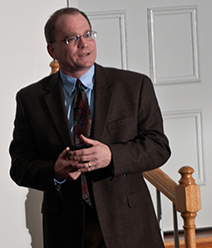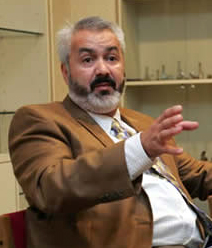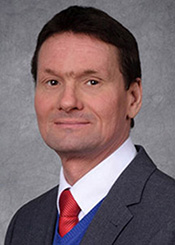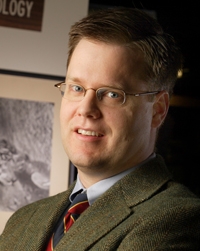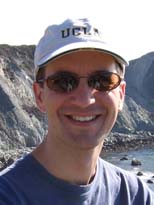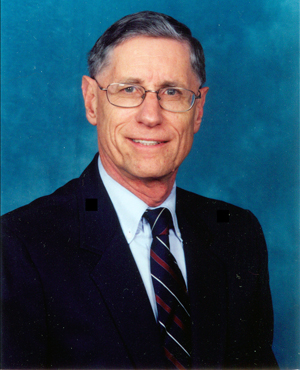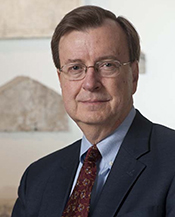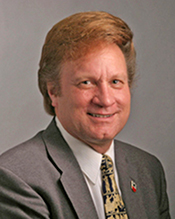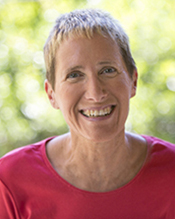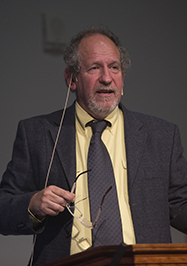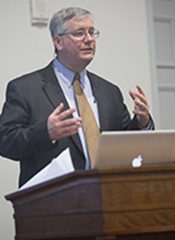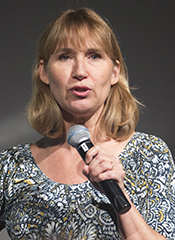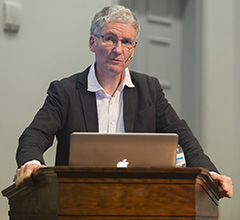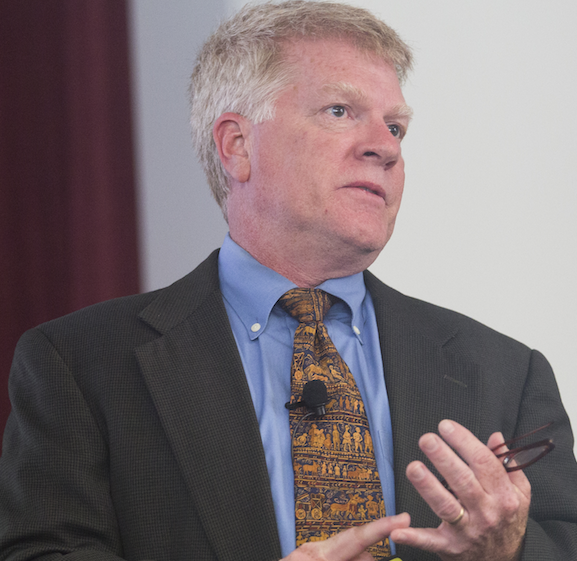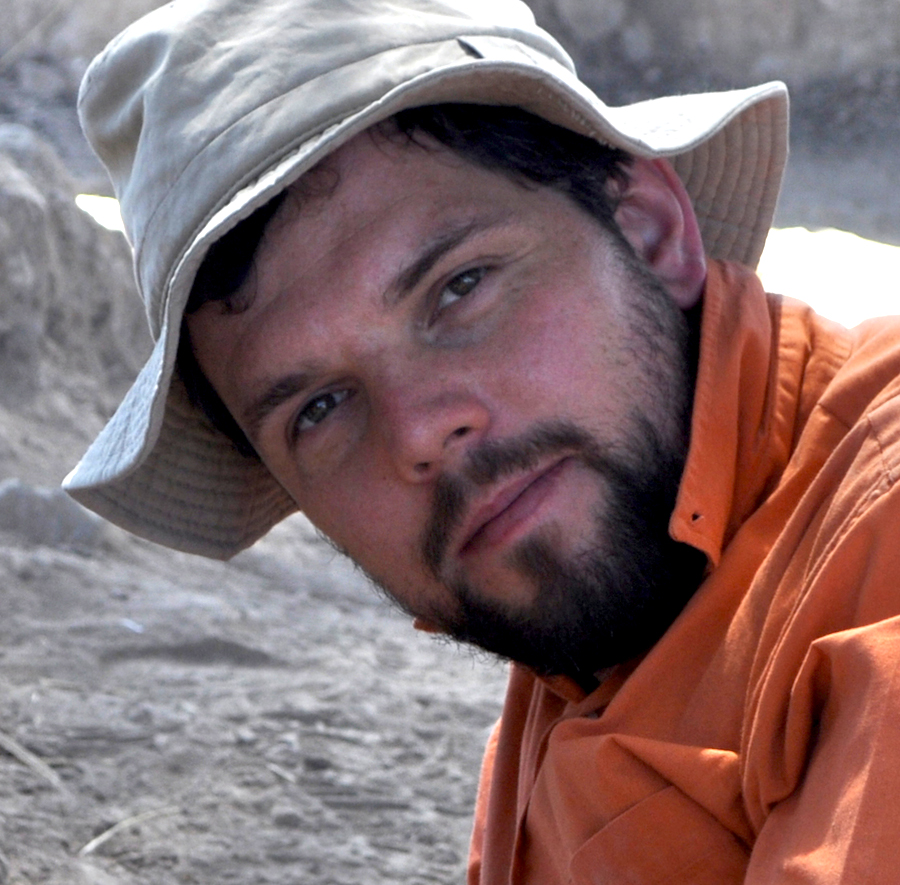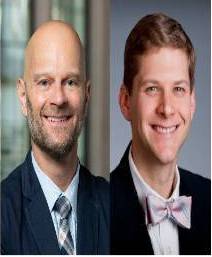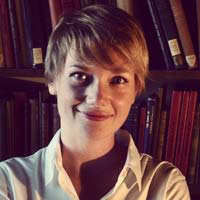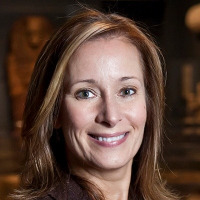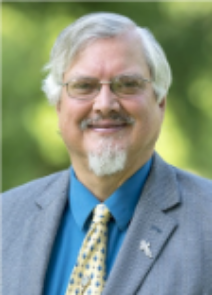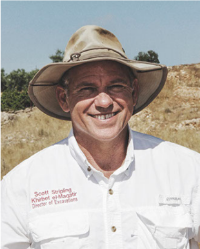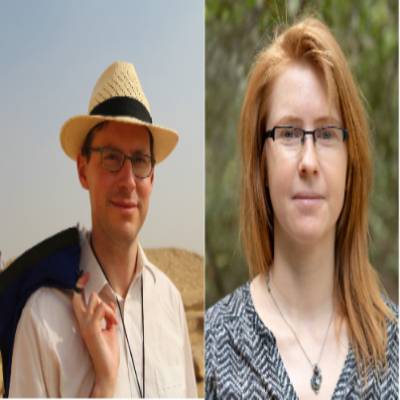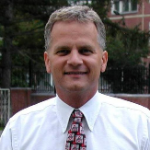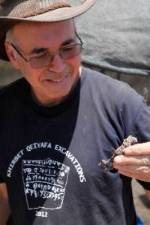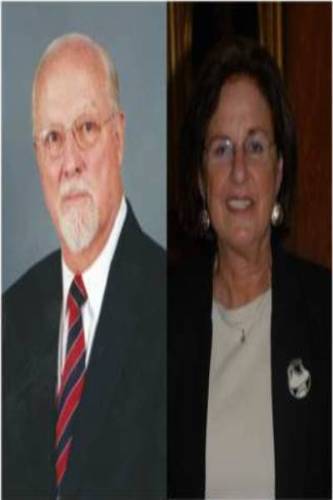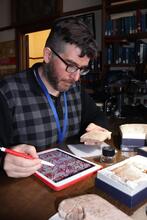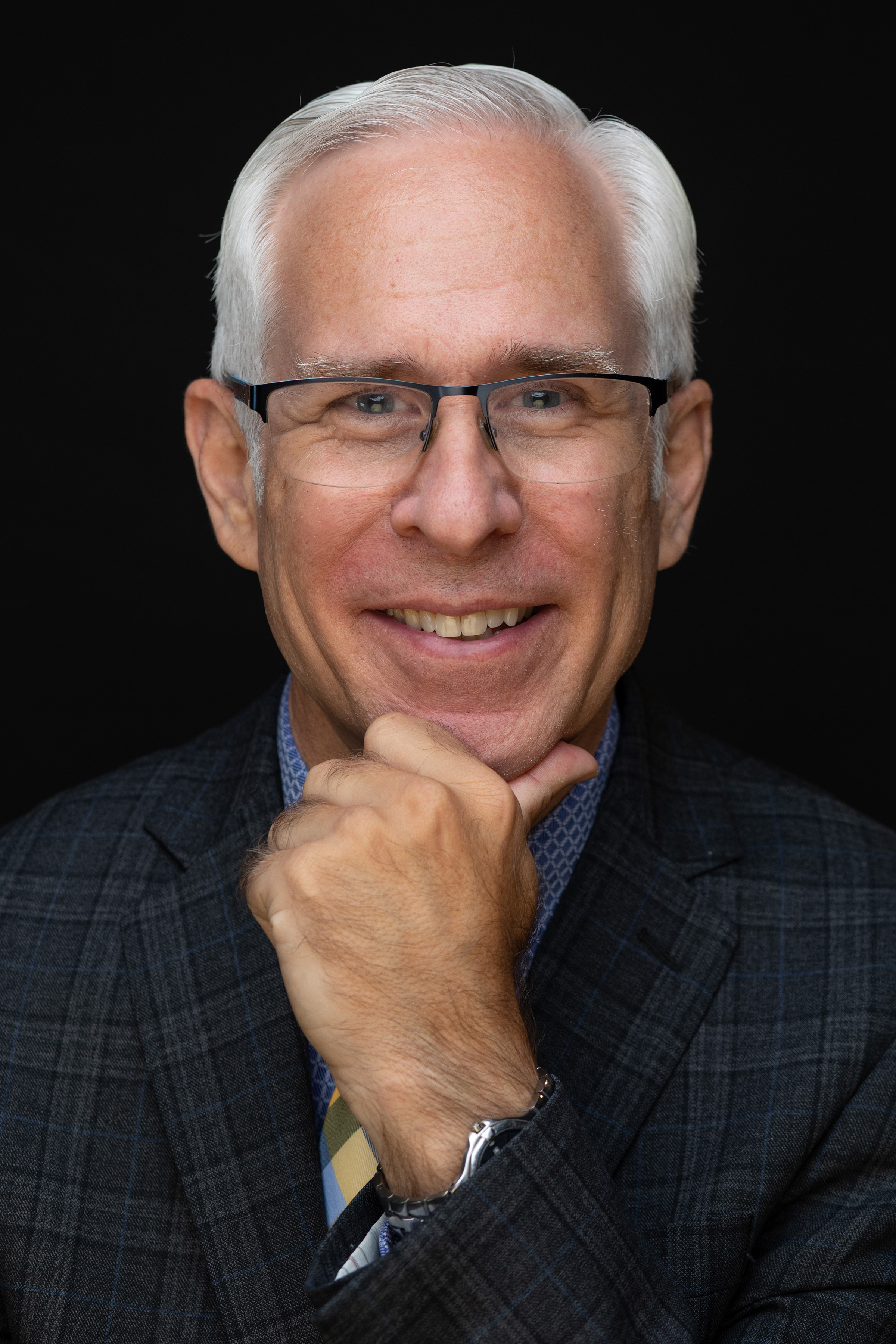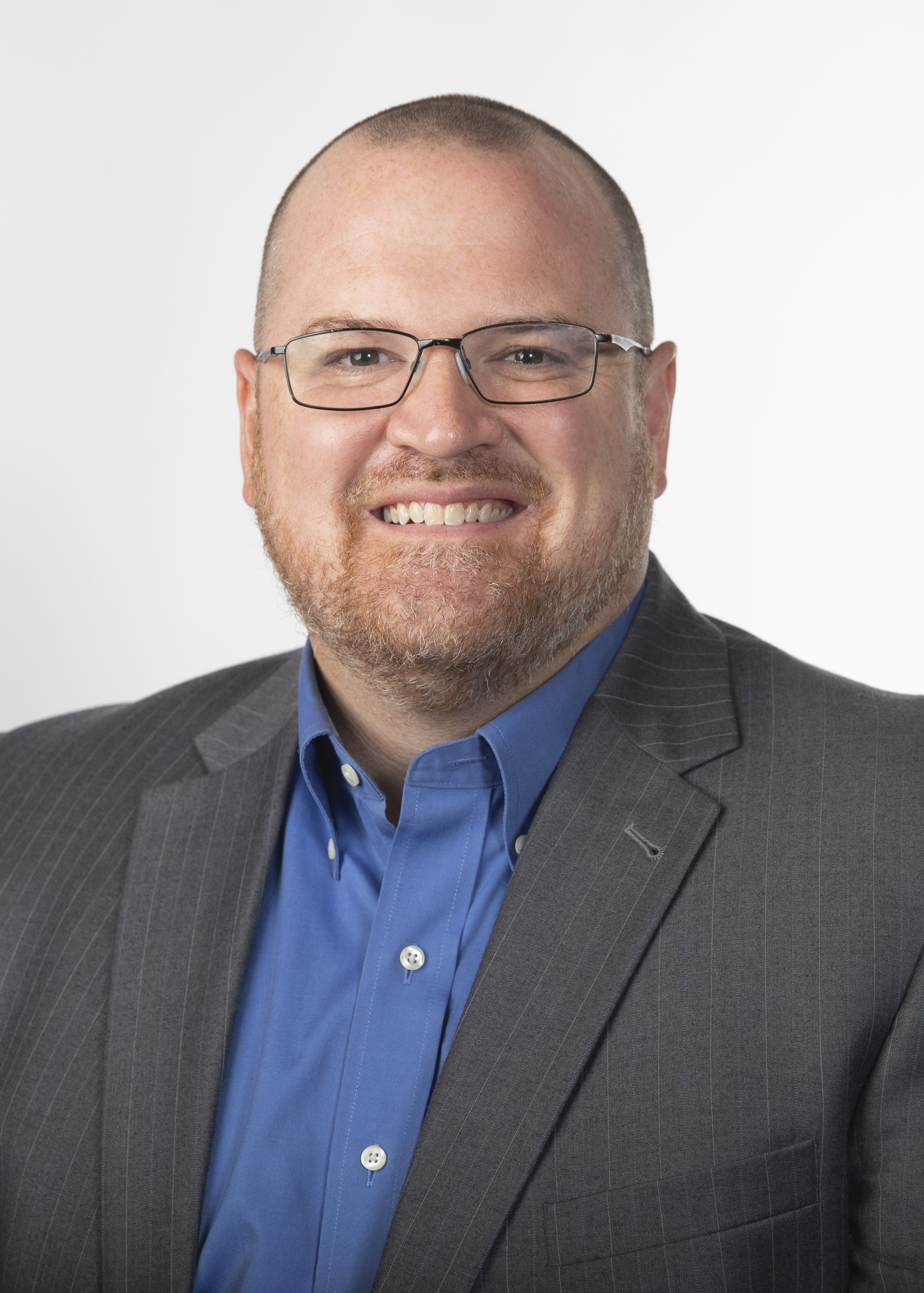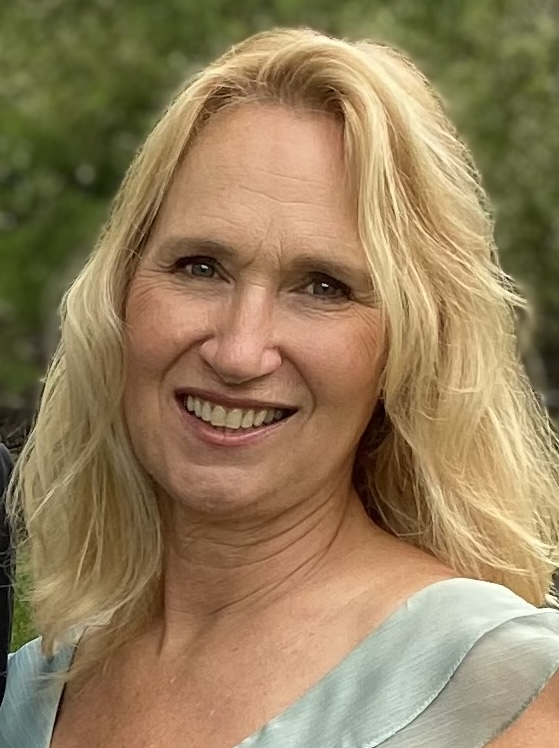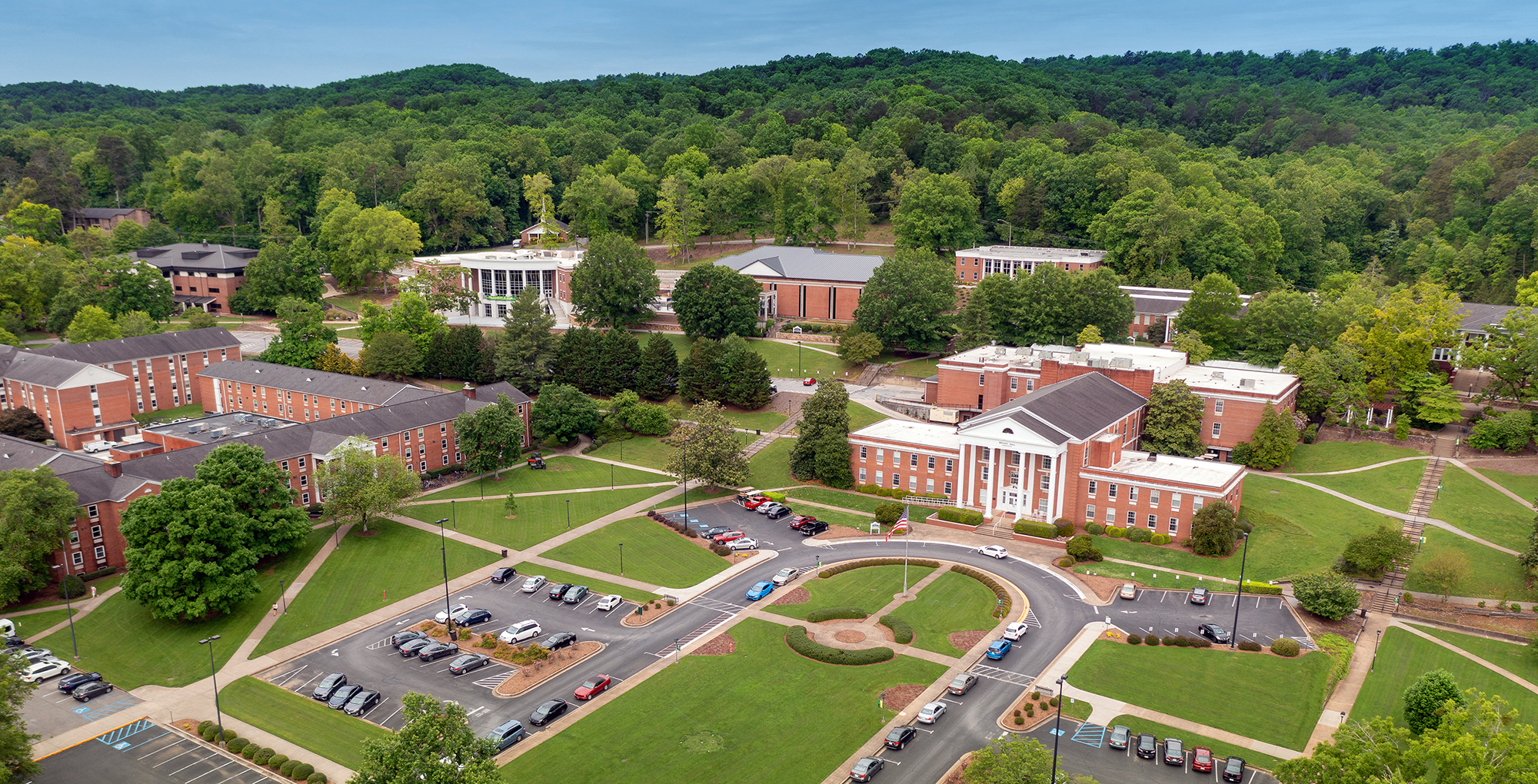
Lecture Series
Upcoming Museum Lecture
Fall Semester 2024
PAST LECTURES VIDEO ARCHIVE
Thomas W. Davis, PhD
Thomas W. Davis, PhD / The Rise and Fall of Biblical Archaeology / December 1, 2005 »
Overview:
The biblical archaeology of William Foxwell Albright was an attempt to ground the
historical witness of the Bible in realia, or demonstrable historical reality. Albright
brought biblical archaeology out of the armchair and into the field in Palestine.
His student, George Edward Wright, created a positivist theological/theoretical basis
for biblical archaeology. Albright and Wright saw biblical archaeology as an objective
science, providing historical reality to the Hebrew Bible.
Presenter:
Thomas Davis (PhD 1987, University of Arizona) is professor of Archaeology and Biblical
Backgrounds at Southwestern Baptist Theological Seminary. Currently, he directs the
Southwestern Baptist Theological Seminary excavations at the early Christian site
of Kourion in Cyprus.
Thomas G. Merry, MD
Overview:
Dr. Merry served as Officer in Charge of all medical operations in post-war southern
Iraq. During his tour of duty, he was also assigned the role of resident historian
over the ancient cities of Ur and Babylon, where Saddam Hussein had built his palace.
Dr. Merry spoke about his experience protecting these major archaeological sites and
their unique place in history for the birth of civilization and connection to the
Bible.
Presenter:
Thomas Merry (MD 1978, Loma Linda University) is a Family Practitioner in Gardenville,
Nevada.
James K. Hoffmeier, PhD
Overview:
The historicity of the biblical exodus and the physical route of the journey of ancient
Israel has long been a subject of intense debate. In this public lecture, Hoffmeier
discussed his recent excavations at Tell el-Borg, which has produced dramatic new
answers for these questions. Due to an exclusivity agreement, Hoffmeier's lecture
is not available for purchase.
Presenter:
James Hoffmeier (PhD 1983, University of Toronto) is professor of Old Testament and
Ancient Near Eastern History and Archaeology at Trinity Evangelical Divinity School.
Since 1994, he has directed the North Sinai Archaeological Project.
Dr. Scott Caroll Ph.D
Scott Carroll, PhD / Gnosticism, The Gospel of Judas, and the Da Vinci Code / February 12, 2007
Overview:
In the past few years, much media attention has been brought on the Gnostic gospels
as a result of the purchase and publication of the Gospel of Judas by the National
Geographic Society. The global phenomenon The Da Vinci Code has captured the imagination of millions. What is Gnosticism? Is the Gospel of Judas
as authoritative as the four New Testament Gospels?
Presenter:
Scott Carroll (PhD 1987, Miami University) is co-director of the Center for the Study
of Antiquity and a professor of history. He currently directs excavations at one of
the oldest Christian monasteries located in the Wadi Natrun, Egypt.
William G. Dever, PhD
William G. Dever, PhD / The Age of David and Solomon:Myth or Reality / April 14, 2007 »
Overview:
Until recently, archaeologists in Israel had firmly maintained the existence of the
Israelite kings, David and Solomon, as true monarchs in the Near-Eastern world. However,
the rise of postmodern biblical scholarship has challenged this conclusion. Some scholars
have gone so far as to claim that David and Solomon were mythical figures that did
not exist. In this presentation, William Dever presents the archaeological evidence
for the existence of the United Monarchy.
Presenter:
William Dever (PhD 1966, Harvard University) has been the director of the Albright
Institute of Archaeological Research in Jerusalem and the Nelson Glueck School of
Biblical Archaeology at the Hebrew Union College. He is best known at Southern Adventist
University for placing on campus the artifact collection housed in the Lynn H. Wood
Archaeological Museum.
Alfred J. Hoerth, PhD
Alfred J. Hoerth, PhD / The Worlds of Abraham / November 1, 2007 »
Overview:
Abraham is one of the greatest people in history. Three great faiths claim Abraham
as their forefather. However, what was his life like? What environment did he experience?
By looking beyond kings and battles to such aspects of life as housing, dress, price
index, diet (including a recipe for pigeon pot pie), and more, Alfred Hoerth presents
a picture of the world in which Abraham grew up and the great length of his step of
faith in leaving that home.
Presenter:
Alfred Hoerth (PhD 1961, University of Chicago) is professor emeritus of archaeology
at Wheaton College, outside of Chicago. He has excavated in the Sudan, Egypt, Joran,
Israel, and Syria.
Michael G. Hasel, PhD
Michael G. Hasel, PhD / Religion and Gods in Ancient Israel / February 21, 2008 »
Overview:
Who were the gods of ancient Israel, as described in the Bible? Can we identify Baal
and Asherah, and how did they come to play such a prominent role in the courts of
the Judean kings, even being placed in the temple of Jerusalem by Manasseh? Hasel
reveals why the prophets denounced these ancient gods of the Canaanites and why they
proved such a pervasive tool in Israelite politics and religion.
Presenter:
Michael Hasel (PhD 1996, University of Arizona) is director of the Institute of Archaeology
and curator of the Lynn H. Wood Archaeological Museum at Southern Adventist University.
At present, he is co-director for The Fourth Expedition to Lachish.
Peter J. Brand, PhD
Peter J. Brand, PhD / The Campaigns of Seti I into Western Asia / April 3, 2008 »
Overview:
In his lecture, Brand re-examines splendid battle scenes that secured Seti’s reputation
as one of Egypt’s most victorious pharaohs. How much of the pharaoh’s war record is
ancient “hype,” and how much reflected true strategic accomplishments? Brand answers
these questions and a lot more.
Presenter:
Peter Brand (PhD 1998, University of Toronto) is professor of history and Egyptology
at the University of Memphis. He directs The Karnak Great Hypostyle Hall Project in
Egypt, where he leads a team to record the rapidly deteriorating reliefs and inscriptions
on the temple walls.
Jasper Gaunt, PhD
Jasper Gaunt, PhD / Faces of Power:Portraiture in the Greco-Roman World / October 8, 2008 »
Overview:
In this lecture, Gaunt describes in great details the origins of portraits throughout
Roman Art. Thousands of years before the first photograph, Greek artists learned to
immortalize their heroes in portraits. While the Greeks did not invent the art of
portraiture, they were the first to fully exploit its many uses.
Presenter:
Jasper Gaunt (PhD 2002, New York University) is curator of Greek and Roman Art for
the Michael C. Carlos Museum at Emory University in Atlanta. He is also adjunct professor
of art history at Emory's graduate school.
Pamela Gaber, PhD
Pamela Gaber, PhD / History of Portraiture:From Egypt to Rome / November 6, 2008 »
Overview:
Gaber traces the development of portraiture from its beginnings in Egypt down to Roman
times. Portraits are either stylized or naturalistic (i.e., true to life). Ancient
portraiture, for the most part, was stylized.
Presenter:
Pamela Gaber (PhD 1982, Harvard University) is professor of Archaeology and Judaic
Studies at Lycoming College in Pennsylvania. Every summer, she directs the Lycoming
College Expedition to Idalion from her home in Alambra, Cyprus.
Stan Hudson, DMin
Stan Hudson, DMin / Tracing the Spread of Early Christianity through Coins / Februrary 19, 2009 »
Overview:
Two thousand years ago, long before high-resolution images and HDTVs, Romans emperors
learned to disseminate their political message through coins. Roman coins, wrote numismatist
Michael Grant, "served a propaganda purpose far greater than has any other national
coinage before or since."
Presenter:
Stan Hudson (DMin, Fuller Theological Seminary) is a biblical numismatist and pastor
of the Moscow Seventh-day Adventist Church in Idaho and Pullman Community Worship
in Washington. He was the main numismatist consultant for the Faces of Power exhibit,
and many coins from his personal collection were on display for this exhibit in the
Lynn H. Wood Archaeological Museum.
Michael G. Hasel, PhD
Michael G. Hasel, PhD / The Future of Biblical Archaeology / October 20, 2009 »
Overview:
In the past 40 years, biblical archaeology has sustained a number of attacks from
inside and outside the discipline. In the '70s and '80s, William Dever called for
a re-examination of the methodology and purpose of biblical archaeology as it was
practiced at the time. In the light of these events, Hasel presents the findings and
experiences of Southern Adventist University's Near Eastern Study Tour and 2009 season
at Khirbet Qeiyafa.
Presenter:
Michael Hasel (PhD 1996, University of Arizona) is director of the Institute of Archaeology
and curator of the Lynn H. Wood Archaeological Museum at Southern Adventist University.
At present, he is co-director for The Fourth Expedition to Lachish.
Yosef Garfinkel, PhD
Yosef Garfinkel, PhD / Excavating the Biblical City of Sha'arayim / November 17, 2009 »
Overview:
After two years of fieldwork, Khirbet Qeiyafa is already becoming the center of the
controversy over the existence of a complex state society in early Judah. The findings
from this site have been spectacular and revealed much to archaeologists about the
development of the Kingdom of Judah. In this presentation, Yosef Garfinkel presents
an up-to-date description of the discoveries and possible identification of the site
of Khirbet Qeiyafa.
Presenter:
Yosef Garfinkel (PhD 1992, The Hebrew University of Jerusalem) is co-director of the
Khirbet Qeiyafa Archaeological Project and the Yigael Yadin Chair in Archaeology of
Eretz Israel at the Hebrew University of Jerusalem, Israel. Currently, he is co-director
for The Fourth Expedition to Lachish.
K. Lawson Younger, PhD
K. Lawson Younger, PhD / Aramean Astral Religion in Light of Recent Discoveries / March 17, 2010 »
Overview:
This lecture K. Lawson Younger, PhD, presents some of the most recent discoveries
and understandings of the Mesopotamian and Egyptian astral traditions, and their connections
to the biblical passage of 2 Kings 23, where Aramean astral priests are mentioned.
Presenter:
K. Lawson Younger (PhD 1990, Sheffield University) is professor of Old Testament,
Semitic Languages, and Ancient Near Eastern History at Trinity Evangelical Divinity
School, Deerfield, Illinois.
Michael G. Hasel, PhD
Michael G. Hasel, PhD / Excavating in the Shadow of Alexander the Great / October 7, 2010 »
Overview:
In this lecture, Hasel shares the latest archaeological discoveries found at Khirbet
Qeiyafa. In the 2010 season, the Southern Adventist University excavation team uncovered
a large building dating to the time of Alexander the Great, the late fourth century
B.C. This discovery, along with Hellenistic period pottery and coins, provides strong
evidence for a second period of occupation at this important biblical site.
Presenter:
Michael Hasel (PhD 1996, University of Arizona) is director of the Institute of Archaeology
and curator of the Lynn H. Wood Archaeological Museum at Southern Adventist University.
At present, he is co-director for The Fourth Expedition to Lachish.
William G. Dever, PhD
William G. Dever, PhD / Uncovering the Past:50 Years of Biblical Archaeology / October 28, 2010 »
Overview:
In this interview-style presentation, Michael Hasel dialogued with Dever over the
past, present, and future of a discipline he has helped shape. In the 1970s Dever
became famous (or infamous) for challenging the way biblical archaeology was practiced
at the time. Biblical archaeology was, for the most part, an amateur discipline practiced
by biblical scholars who were not trained as field archaeologists. "Biblical archaeology
was parochial," he explains, "an aspect of biblical studies, not an independent discipline."
Dever's excavations at biblical Gezer (1964–1974) helped change much of that.
Presenter:
William Dever (PhD 1966, Harvard University) has been the director of the Albright
Institute of Archaeological Research in Jerusalem and the Nelson Glueck School of
Biblical Archaeology at the Hebrew Union College. He is best known at Southern Adventist
University for placing on campus the artifact collection housed in the Lynn H. Wood
Archaeological Museum.
Yoav Farhi, PhD
Overview:
The site of Khirbet Qeiyafa has drawn much attention—controversial and otherwise—particularly
on the Iron Age stratum. Equally important, however, are the findings from the following
occupational activity at the site. In this lecture, Yoav Farhi presents the numismatic
findings from Khirbet Qeiyafa.
Presenter:
Yoav Farhi (PhD, The Hebrew University of Jerusalem) is the numismatic (coin) expert
at Khirbet Qeiyafa. He has analyzed every coin, jewelry, and metal object unearthed
over the course of the excavations.
John Monson PhD
John Monson PhD / The Temple of Solomon:The Center of the Universe Then and Now »
Overview:
Of all the buildings of antiquity, none is more famous than the temple of Solomon. It served as the center Judean religion for four centuries. For this presentation, John Monson discusses Solomon's Temple and the transcendent significance this structure had not only in antiquity but what it means to modern society.
Presenter:
John Monson (PhD, Harvard University) is an associate professor of Old Testament and
Semitic Languages at Triinity Evangelical Divinity School. He has extensive archaeological
fieldwork experience in the Near East, including Syria, Lebanon, and Israel. His most
recent publications include Dothan I:Remains from the Tell (1953-1964) (Eisenbrauns),
"1 Kings" in the Zondervan Illustrated Bible Backgrounds Commentary, and The Temple
of Solomon (Oxford University Press, forthcoming).
Steven M. Ortiz, PhD
Steven M. Ortiz, PhD / Gezer:The Search for the City of Solomon / September 21, 2011 »
Overview:
Tel Gezer sits at an important crossroads, guarding the pass from the coast up to
Jerusalem. Throughout history this has been a site of major battles from the second
millennium B.C. until the modern period. Gezer has become infamous with the reference
to Solomon rebuilding Gezer along with Hazor and Megiddo (1 Kings 9:15) and receiving
this city as a dowry upon the marriage to Pharaoh's daughter. Recent trends in biblical
archaeology have questioned the historicity of the United Monarchy as reflected in
the biblical text and a polemical debate has developed. A recent archaeological project
headed by Steve Ortiz and Sam Wolff under the sponsorship of the Tandy Institute for
Archaeology at Southwestern Baptist Theological Seminary is investigating the history
of Gezer in light of these recent developments. Ortiz provides an overview of the
results of the past five seasons of excavations.
Presenter:
Steven Ortiz (PhD 2000, University of Arizona) is professor of Archaeology and Biblical
Backgrounds and director of the Charles D. Tandy Archaeology Museum at Southwestern
Baptist Theological Seminary. He is currently the principal investigator and co-director
of the excavations at Tel Gezer.
Michael G. Hasel, PhD
Overview:
Michael Hasel presents on the findings from the 2011 excavation season at Khirbet
Qeiyafa—the final season of Southern Adventist University's participation in the Khirbet
Qeiyafa Archaeological Project.
Presenter:
Michael Hasel (PhD 1996, University of Arizona) is director of the Institute of Archaeology
and curator of the Lynn H. Wood Archaeological Museum at Southern Adventist University.
At present, he is a co-director The Fourth Expedition to Lachish.
Martin G. Klingbeil, DLitt
Overview:
In the ancient world, stamp seals served as a tool for identification, a symbol of
socioeconomic status, and a venue for personal expression. They were a platform for
communication and diversification. Throughout the excavations at Khirbet Qeiyafa,
several stamp seals have been found. If these seals could talk, what would they say?
Which stories would they share about the people who lived long ago? Could these seals
help illuminate gaps of ambiguity within the archaeological record? In this lecture,
Martin G. Klingbeil, PhD, invites viewers into the processes used to uncover the meaning
of stamp seals. In doing so, he applies his research to the latest stamp seal findings
at Qeiyafa and how possible interpretations of the stamp seals impact research.
Presenter:
Martin Klingbeil (DLitt 1995, Stellenbosch University) is a professor of Biblical
Studies and Archaeology at Southern, as well as the associate director of its Institute
of Archaeology. He is currently co-director for The Fourth Expedition to Lachish.
Daniel Master, PhD
Overview:
Thirty-five miles south of modern Tel-Aviv, the famous seaport of Ashkelon decorates
the Mediterranean coast of Israel. This city, which holds the distinction of being
both the oldest and largest maritime city in Israel, is ripe with nuggets of historical
importance. After more than 25 years of excavation, archaeologists are still only
beginning to piece together the significances of their findings. However, amongst
the numerous occupation layers, the arrival of the Philistines at Ashkelon is of particular
interest to biblical enthusiasts. Just who were these mighty opponents of the Hebrew
people? Where did they come from? Were they really as barbaric as is frequently depicted?
To answer these questions, Daniel Master, PhD, offers theories developed from the
most recent excavations at the site.
Presenter:
Daniel Master (PhD 2001, Harvard University) is professor of archaeology at Wheaton
College. Currently, he is co-director of the Leon Levy Expedition to Ashkelon.
Aaron Burke, PhD
Overview:
The ancient city of Jaffa has a long and prestigious history, being one of the oldest cities in Israel. It is mentioned in the Bible several times, most importantly as a port for Solomon. This lecture by Aaron Burke presents some of the rich history of this fascinating city.
Presenter:
Aaron Burke (PhD 2004, University of Chicago) is an associate professor of the Archaeology
of the Levant and Ancient Israel at the University of California, Los Angeles. Since
2007, Aaron has served as co-director of the Jaffa Cultural Heritage Project.
Michael G. Hasel, PhD
Overview:
This introductory lecture serves as a preview into the Lynn H. Wood Archaeological
Museum’s latest exhibit “The Battle Over King David," which is based upon the joint
excavations between The Hebrew University of Jerusalem and Southern Adventist University
between the 2009 and 2011 seasons at Khirbet Qeiyafa, Israel.
Presenter:
Michael Hasel (PhD 1996, University of Arizona) is director of the Institute of Archaeology
and curator of the Lynn H. Wood Archaeological Museum at Southern Adventist University.
At present, he is co-director for The Fourth Expedition to Lachish.
Yosef Garfinkel, PhD
Yosef Garfinkel, PhD / Sanctuaries and Cults at Khirbet Qeiyafa / February 12, 2013 »
Overview:
New findings at Khirbet Qeiyafa provide evidence that a cult existed at the site.
Standing stones, altars, shrines, and libation vessels all point to the inhabitants’
religious practices. However, there is something unique about these cultic items.
What does the lack of images tell archaeologists about the nature of this cult? Do
these imageless cultic items tie in with the peculiar local diet? How do these findings
relate with the biblical mandates on food and worship? Yosef Garfinkel, PhD, flies
in from the Hebrew University of Jerusalem to provide his highly respected view on
both the definitive existence of sanctuaries and the role of the cult in this ancient
city.
Presenter:
Yosef Garfinkel (PhD 1992, The Hebrew University of Jerusalem) is co-director of the
Khirbet Qeiyafa Archaeological Project and the Yigael Yadin Chair in Archaeology of
Eretz Israel at the Hebrew University of Jerusalem, Israel. Currently, he is co-director
for The Fourth Expedition to Lachish.
Bryant G. Wood, PhD
Bryant G. Wood, PhD / The Discovery of the Lost Fortress of Ai / March 20, 2013 »
Overview:
The location of Joshua's Ai has been a matter of mystery and controversy since the
beginnings of archaeological research in Israel. Scholars have concluded that the
location of Joshua's Ai is at et-Tell. They have also used this conclusion to discredit
the biblical account of Joshua 7-8 because there is no evidence of occupation at et-Tell
during the time of Joshua. Since 1995, under the direction of Associates for Biblical
Research (ABR) Director of Research Bryant G. Wood (PhD, University of Toronto), ABR
studies and excavations have uncovered important archaeological finds at Khirbet el-Maqatir,
just 0.6 miles (1 km) west of et-Tell. The discoveries include a city gate and wall
system, large amounts of pottery from the time of Joshua, evidence of destruction
by fire, ancient coins, a house dating to the first century A.D., and a Byzantine
monastery. This area is located nine miles north of Jerusalem. These discoveries provide
evidence for a tentative identification of Khirbet el-Maqatir as the biblical city
of Ai.
Presenter:
Bryant Wood (PhD 1985, University of Toronto) is the director of research at Associates
for Biblical Research. Currently, he is directing excavations at Khirbet el-Maqatir.
P. Kyle McCarter, PhD
Overview:
Archaeological excavations in the Near East have yielded many inscriptions over the
last century. Inscriptions as they relate to the time period of the 10th century B.C.
in Israel, however, are not common in the archaeological record. In his presentation,
P. Kyle McCarter, PhD, discusses the most recent epigraphic findings relating to the
highly elusive United Monarchy period in ancient Israel.
Presenter:
P. Kyle McCarter (PhD 1974, Harvard University) is William Foxwell Albright Professor
in Biblical and Ancient Near Eastern Studies at Johns Hopkins University. McCarter,
one of the leading experts on the origin of the alphabet and the Dead Sea Scrolls,
has most recently published on the Tel Zayit abecedary.
Michael G. Hasel, PhD
Michael G. Hasel, PhD / Excavating Nebuchadnezzar's Destruction at Lachish / October 22, 2013 »
Overview:
The biblical city of Lachish is mentioned 24 times in the Old Testament. Some of the
most notable references are:the Israelite conquest of Lachish (Joshua 10:3-35; 12:11;
15:39), the Assyrian siege and destruction of the city by the Assyrian king Sennacherib
in 701 B.C. (2 Kings 19:8; 2 Chronicles 32:9), and the destruction of both Lachish
and Jerusalem by the Nebuchadnezzar II, king of Babylon, in 586 B.C. (Jeremiah 34:7).
Lachish, during the Iron Age, stood as the most important city in Judah after Jerusalem.
The biblical site of Lachish, known locally as Tell ed-Duweir, has been excavated
in three prior expeditions. A fourth expedition to this site, along with reasons for
this new project, serve as the focus of Hasel’s presentation.
Presenter:
Michael Hasel (PhD 1996, University of Arizona) is director of the Institute of Archaeology
and curator of the Lynn H. Wood Archaeological Museum at Southern Adventist University.
At present, he is co-director for The Fourth Expedition to Lachish.
Randall W. Younker
Randall W. Younker, PhD / Tell Jalul:A Levitical City of Refuge in Jordan? / February 11, 2014 »
Overview:
Tell Jalul, part of the long-running Madaba Plains Project in Jordan, has long been
considered by many archaeologists and biblical scholars as being the site of biblical
Heshbon. Randall Younker, PhD, director of the excavations at Tell Jalul, presents
new data which reconfigures the biblical-period history at this site.
Presenter:
Randall Younker (PhD, University of Arizona) is Professor of Old Testament and Biblical
Archaeology at Andrews University. Currently, he is director of the Tell Jalul excavations
in central Jordan, as part of the Madaba Plains Project.
Jodi Magness, PhD
Jodi Magness, PhD / Ossuaries and the Burials of Jesus and James / March 11, 2014 »
Overview:
Popular archaeological discoveries such as the Talpiyot Tomb and the Garden Tomb have
led many to correlate these findings with events linked to the life and death of Jesus.
Are these correlations legitimate or just popularized ideas? In her lecture, Jodi
Magness, PhD, discusses the ancient burial customs among Jews, Romans, and other people
groups as well as the the origin and introduction of ossuaries (bone boxes) into ancient
Jewish society.
Presenter:
Jodi Magness (PhD 1989, University of Pennsylvania) is the Kenan Distinguished Professor
for Teaching Excellence in Early Judaism at the University of North Carolina at Chapel
Hill. Currently, she is director of the Huqoq Excavation Project in Israel.
Martin G. Klingbeil, DLitt
Overview:
After Jerusalem, Lachish was the most important city in Judah during the Divided Monarchy
period in ancient Israel. Mentioned two dozen times in the Old Testament, Lachish
was destroyed during the Divided Monarchy period by Sennacherib, king of Assyria in
701 B.C., and again by Nebuchadnezzar, king of Babylon in 586 B.C. In his lecture,
Martin Klingbeil presents the rich excavation data from the 2014 season at Tel Lachish.
Presenter:
Martin Klingbeil (DLitt. 1995, Stellenbosch University) is a professor of Biblical
Studies and Archaeology at Southern, as well as the associate director of its Institute
of Archaeology. He is currently co-director for The Fourth Expedition to Lachish.
William G. Dever, PhD
William G. Dever, PhD / The Lives of Ordinary People in Ancient Israel / November 2, 2014 »
Overview:
With the great focus on important figures and events in ancient history, it is very
easy to forget the ordinary people of those times. How did they live? What did they
experience day by day? In commemoration of the Lynn H. Wood Archaeological Museum
10-year anniversary, William Dever, PhD, presents on life in ancient Israel from perspective
of ordinary people.
Presenter:
William Dever (PhD 1966, Harvard University) has been the director of the Albright
Institute of Archaeological Research in Jerusalem and the Nelson Glueck School of
Biblical Archaeology at the Hebrew Union College. He is best known at Southern Adventist
University for placing on campus the artifact collection housed in the Lynn H. Wood
Archaeological Museum.
Jon Seligman, PhD
Overview:
Jerusalem has been the center of tumultuous changes of power for millennia. Throughout
the historical and archaeological record of the ancient Near East, evidence of various
people groups have emerged through the many excavation project conducted over the
last century. Seligman focuses on the latter end of these successive historical periods
and presents life in Jerusalem and the surrounding hinterland including aspects of
social, economic, and religious life during that time.
Presenter:
Jon Seligman (PhD 2010, Haifa University) has been involved in numerous excavations
within Jerusalem and the surrounding area and throughout Israel. Over the course of
his archaeological work, Seligman has worked for the Israel Antiquities Authority
for nearly 30 years, serving in numerous capacities, including:research archaeologist,
Jerusalem district archaeologist, and Jerusalem regional archaeologist. Currently,
he is head of Excavation, Surveys, and Research Department, Israel Antiquities Authority.
Andrew G. Vaughn, PhD
Chronology of the ancient Near East is a constantly recurring problem scholars have been successfully able to resolve concerning various historical periods. The period of the Divided Monarchy, specifically as it relates to the reign of King Hezekiah, has traditionally been attributed with the inception and exclusive-use of lmlk jar handles. The term "lmlk," as translated from ancient Hebrew, means "to the king," "for the king," or "belonging to the king." In his lecture, Vaughn presents the arguments against attribution of lmlk storage jars to the period of King Hezekiah's reign, and explores the implications, assumptions, and evidences for claims contrary to this chronological placement.
Presenter:
Andrew G. Vaughn (PhD 1996, Princeton Theological Seminary) has been, and currently
is, part of various archaeological projects taking place in Syro-Palestine. Vaughn
is the author, editor, and contributor to various books, articles, and volumes related
ancient Near Eastern archaeology and biblical studies. In addition to his archaeological
experience and publishing record, Vaughn also previously served as a Fulbright Fellow
in the Institute of Archaeology at Tel Aviv University. Presently, Vaughn serves as
Executive Director for the American Schools of Oriental Research, based out of Boston
University.
Constance E. C. Gane, PhD
Constance E. C. Gane, PhD / Nineveh's Halzi Gate and the Fall of an Empire / March 30, 2015 »
Overview:
The Kingdom of Assyrian, once standing as the most formidable power in the ancient
Near East, struck both fear and terror in the hearts of all surrounding nations. Through
the use of execution, deportation, exile, and terror, the ancient Assyrians left a
mark which can be found at archaeological sites throughout the Near East. In her presentation,
Gane presents the extent of the Assyrian empire while more specifically speaking on
the rise and ultimate collapse of this once magnificent empire through the lens of
its capital city, Nineveh.
Presenter:
Constance E. C. Gane (PhD 2012, University of California, Berkeley) has been involved
in numerous excavation projects in the Near East. Over the course of 20 plus years
of archaeological experience, Gane has had the privilege of working at some of the
most well-known archaeological sites from the ancient Near Eastern world. Trained
as a Mesopotamian archaeologist, and having worked extensively in northern Iraq, specializing
on the archaeology of ancient Assyria, Gane has more recently been involved with the
long-running excavations at Tall Jalul in Jordan (as part of the Madaba Plains Project),
while also serving as both associate professor of archaeology and the Old Testament
and curator of the Horn Archaeological Museum at Andrews University.
Michael G. Hasel, PhD
Michael G. Hasel, PhD / Excavating the Judean City of Lachish, 2015 / October 12, 2015»
Overview:
The biblical city of Lachish is mentioned 24 times in the Old Testament. Some of the
most notable references are:the Israelite conquest of Lachish (Joshua 10:3-35; 12:11;
15:39), the Assyrian siege and destruction of the city by the Assyrian king Sennacherib
in 701 B.C. (2 Kings 19:8; 2 Chronicles 32:9), and the destruction of both Lachish
and Jerusalem by the Nebuchadnezzar II, king of Babylon, in 586 B.C. (Jeremiah 34:7).
Lachish, during the Iron Age, stood as the most important city in Judah after Jerusalem.
In this presentation, Hasel recaps the 2015 season at Tel Lachish.
Presenter:
Michael Hasel (PhD 1996, University of Arizona) is director of the Institute of Archaeology
and curator of the Lynn H. Wood Archaeological Museum at Southern Adventist University.
At present, he is co-director for The Fourth Expedition to Lachish.
Thomas Staubli, Dr. theol.
"Let there be light!" One of the most famous and well known phrases from the Bible. The study of light in the context of ancient Near Eastern iconographic studies, at the present, is a relatively new undertaking in biblical scholarship. Staubli, in this lecture, presents his research on this topic through a survey of the depiction of light over time in Near Eastern civilizations.
Presenter:
Thomas Staubli (Dr. theol., University of Fribourg) is a widely-published author and
expert on ancient Near Eastern seals and iconography. Co-founder and development manager
of the Bible + Orient Museum at the University of Fribourg in Switzerland, Staubli
lectures internationally on topics relating to the Old Testament and ancient Near
Eastern iconography. Currently, Staubli is professor of Old Testament at the University
of Fribourg.
James W. Hardin, PhD
James W. Hardin, PhD / Khirbet Summeily: Excavations on the Philistine Border / March 28, 2016 »
Overview:
Is the historical information of the Bible accurate? Recently, the accounts of the
United Monarchy with its greatest king, David and Solomon, has come under strong criticism.
In this presentation, James Hardin brings recent information from surveys and excavations
on the border between Judah and Philistia that shed light on this important question.
Presenter:
James W. Hardin (PhD 2001, Cobb Institute of Archaeology) has participated widely in archaeological fieldwork, both in the southeastern and
southwestern United States and at numerous sites in Cyprus, Israel, and Jordan. Hardin specializes in the Bronze and Iron Age cultures of ancient Syria-Palestine.
He is an expert in ceramic analysis with wider interests including early and secondary
state formation, household archaeology, multi-disciplinary approaches to understanding
the archaeological record, and the use of archaeology, anthropology, biblical texts
and other historical documents for understanding Old Testament history and the broader
cultures of the ancient Near East.
Michael G. Hasel, PhD
Overview:
The Biblical city of Lachish was the second most important city in Judah. The Bible
records various instances where Lachish were conquered, such as the Israelite conquest,
the Assyrian siege and its destruction by the Babylonians. Lachish has played an important
role very early in the period of the patriarchs from Joseph to the Iron Age period.
In this presentation, Hasel discusses the 2016 season at Tel Lachish.
Presenter:
Michael Hasel (PhD 1996, University of Arizona) is director of the Institute of Archaeology
and curator of the Lynn H. Wood Archaeological Museum at Southern Adventist University.
At present, he is co-director for The Fourth Expedition to Lachish.
Watch Now
Izaak J. de Hulster, PhD
Overview:
In this lecture, Izaak de Hulster focuses on concepts of vision and light. De Hulster
uses iconographic exegesis to analyze various interpretations of these visual sources
in iconographic motifs. De Hulster addresses cosmic geography and its relation to the notion of order in antiquity. This lecture concentrates on a specific group of symbols that have significance to
ancient constitutions of ecology. In addition to being present in the ancient world,
de Hulster contends that these ecological understandings still have relevance today.
Presenter:
Izaak J. de Hulster (PhD 2008, University of Göttingen) From 2009-2014, he worked
as post-doctoral researcher at the Georg-August-University Göttingen (Germany) as
part of the Alexander-von-Humboldt foundation sponsored Sofja Kovalevskaja Project
"Unity and Diversity in Early Jewish Monotheisms." He holds an MA in theology from
Utrecht University and an MDiv from the Seminary of the Baptist congregations in The
Netherlands.
The Search for YHWH's Image
The Search for YHWH's Image in Light of Seals from Biblical Times / February 7, 2017»
Overview:
In this lecture, Professors Strawn and LeMon analyze traditional representations of
YHWH in ancient motifs. In particular, Strawn and LeMon look at what images existed in
antiquity despite the Old Testament's ban on images. Strawn and LeMon's study focuses
on specific representations that scholars suggest are emblematic of YHWH. Of these
representations, LeMon and Strawn examine arguments regarding the possibility of the
winged form on the Hezekiah seal as YHWH. They tie this depiction to descriptions
of YHWH in the Psalms, and they position it in conjunction with other archaeological
finds bearing similar scenes. They also argue for the possibility that the "Lord of
the Animals" motif found on many seals correlates to identifications of YHWH in the
biblical book of Job. Ultimately, Strawn and LeMon suggest that these seal images
shed light on YHWH and assist modern readers in understanding biblical material.
Presenters:
Pictured left, Brent A. Strawn (PhD 2001, Princeton Theological Seminary) is a professor
of Old Testament and director of the Doctor of Ministry degree at Emory University. Strawn
conducts research in ancient Near Eastern iconography, the Dead Sea Scrolls, Israelite
religion, legal traditions of the Old Testament, and Old Testament theology. Pictured
right, Joel M. LeMon (PhD 2007, Emory University) is an associate professor of Old
Testament at Emory University. LeMon's research focuses on the Psalms, Hebrew and
Ugaritic poetry, and ancient Near Eastern history, literature and art.
Seals and Sealings from Tel Lachish
Seals and Sealings from Tel Lachish:Impressions of Royal Power/ March 27, 2017 »
Presenter:
Martin Klingbeil (DLitt 1995, Stellenbosch University) is a professor of Biblical
Studies and Archaeology at Southern, as well as the associate director of its Institute
of Archaeology. He is currently co-director for The Fourth Expedition to Lachish.
No Video Available
David and Solomon's Legacy
David and Solomon's Legacy:Results of The Fourth Expedition to Lachish / October 02, 2017
Overview: Lachish, during the Iron Age, stood as the most important city in Judah after Jerusalem. The main goal for these past four expedition was to reach Level IV and Level V. These are the levels dating to the 9th and 10th centuries. It had been hardly excavated by previous expeditions but were very important to establish whether the kingdom of Judah actually was expanding to Lachish. Also whether Rehoboam, Solomon's son, rebuilt the city the way the Bible describes in Chronicles. Michael Hasel presents an overview of the some of the past four expeditions to Lachish and the final season of Southern Adventist University's participation in the Lachish Archaeological Project. He also discusses the highlights of each Level I, II, III, IV, and V that contributed to the research of Lachish in relation to the Bible.
Presenter:
Michael Hasel (PhD 1996, University of Arizona) is director of the Institute of Archaeology
and curator of the Lynn H. Wood Archaeological Museum at Southern Adventist University.
At present, he is co-director for The Fourth Expedition to Lachish.
Seals Hidden and Seals Revealed
Seals Hidden and Seals Revealed - Seals in Ancient and Modern Display. / February 12, 2018
Overview: Near Eastern seals were the identity and pride of their owners. Many of them offer rich insight into the religious and material life of the people they belonged to. Here, Agnete Lassen presents a quick tour through the information provided of these fascinating artifacts, the location of major seal collections, and the processes these collections use to preserve and proliferate seal information.
Presenter:
Agnete Lassen (PhD 2012, University of Copenhagen) is associate curator of the Yale
Babylonian Collection at Yale University.
Ancient Egyptian Tomb Painting and Identity.
Ancient Egyptian Tomb Painting and Identity. / March 26, 2018
Overview: For centuries, Egyptian history, religion, and architecture have captured people’s imagination. Excavations and interpretations have now brought to light a wealth of stunning information about the people who lived in this society and how they saw their world. In this presentation, Melinda Hartwig presents Egyptian cosmology, beliefs, and use of imagery through a study of Egyptian tombs.
Presenter: Melinda Hartwig (PhD 2000, New York University) is the curator of Egyptian, Nubian, and Ancient Near Eastern Art at the Michael C. Carlos Museum at Emory University.
The Rise of the Kingdom of Judah in the Tenth Century BC
Overview:How much can we trust the Bible historically? Is there evidence that the kingdom of David and Solomon ever existed? In this lecture, Michael Hasel answers these questions and more. He presents the recent findings of a number of excavation sites throughout Israel, demonstrating the amazing advances in information that have been accomplished in our knowledge of ancient Israelite writing, politics, and daily life.
Presenter: Michael Hasel (PhD 1996, University of Arizona) is director of the Institute of Archaeology and curator of the Lynn H. Wood Archaeological Museum at Southern Adventist University. At present, he publishing the results of The Fourth Expedition to Lachish, of which he was co-director.
St. Paul in Cyprus:Out of the Comfort Zone
St. Paul in Cyprus:Out of the Comfort Zone / February 18, 2019
Overview: While many of us are familiar with the life and work of the apostle Paul, how much do we actually know about the work conditions and society that he faced? In this presentation, Thomas Davis presents the archaeological evidence that gives us context and support for the Biblical text of Acts. In addition, he presents some information that may explain the actions of Paul and his companions during their missionary journeys.
Presenter: Thomas Davis (PhD 1987, University of Arizona) is a professor of Archaeology and Biblical Backgrounds at Southwestern Baptist Theological Seminary. He is a specialist in the New Testament world of Paul. Davis currently directs the SWBTS-funded excavations at the early Christian site of Kourion (Cyprus), which includes SWBTS archaeology students as part of the research team.
Go Now to Shiloh:Have We Found the House of God?
Go Now to Shiloh:Have We Found the House of God? / April 1, 2019»
Overview: Samuel, Eli, the Tabernacle... All these things come to mind when one hears the name Shiloh. However, what historical evidence is there that the site of Shiloh ever existed? Furthermore, is there anything connecting this site to the Biblical stories? In this presentation, Scott Stripling presents the research that he has been doing recently at the site of biblical Shiloh, shedding light on some of the most famous stories and times from the Bible.
Presenter: Scott Stripling, DMin, who is the Director of Excavations at Shiloh. Previously Stripling
directed the excavations at Khirbet el-Maqatir from 2013-2016 and served as Field
Supervisor of the Tall el-Hammam Excavation Project in from 2005 to 2010 and as a
supervisor of the Jerusalem Temple Mount Salvage Project in Jerusalem. His academic
affiliation is with The Bible Seminary in Katy (Houston), Texas where he serves as
the provost.
Watch Now
The Austrian-Israeli Expedition to Tel Lachish
The Austrian-Israeli Expedition to Tel Lachish
Overview: In their lecture, Drs. Höflmayer and Streit spoke about the importance of radiocarbon dating to date the various strata at Tel Lachish. They note the common practice of dating by pottery typology and the valuable data you can get from this method. In particular, the Cypriot pottery and its unique white slip. They argue that this method alone does not always give accurate results, and more evidence is needed to clarify the correct period of time. The period in question was the Late Bronze Age, which traditionally has been connected to the removal of the Hyksos at the beginning of the Egyptian New Kingdom. They submit this event happened earlier than what most scholars would suggest based on radiocarbon dating taken for different locations at Tel Lachish.
Presenters: Felix Höflmayer studied Egyptology and Archaeology at the University of Vienna and joined the Austrian Academy of Sciences in 2006. Dr. Höflmayer teaches at the Institute of Old Testament Studies and Biblical Archaeology, the Institute of Oriental Studies, and the Institute of Egyptology at the University of Vienna. Dr. Höflmayer serves as an editorial board member of the Bulletin of the American Schools of Oriental Research.
Katharina Streit is currently a postdoctoral researcher at the Martin Buber Society of Fellows in the Humanities at Hebrew University of Jerusalem, researching development and changes in material culture from the Middle to the Late Bronze Ages. Dr. Streit co-directs the Tel Lachish excavations with Felix Höflmayer and Ilan Sharon.
No Video Available
Douglas Petrovich PhD
Is Hebrew the Language of the World's Oldest Alphabet? / February 17, 2020
Overview: Dr. Petrovich identifies the man on the donkey as Manasseh, because the name of this individual according to Petrovich, is Hebeded, who identifies himself as an Asiatic, not an Egyptian, even though the writing is in Middle Egyptian. The name Hebeded means "he who was disfavored." He further explains that Manasseh's younger brother Ephraim was given the favor over Manasseh by his grandfather Jacob. Gen. 48:14-20 Petrovich says this shows that Manasseh was disfavored. Now the young man leading the donkey is Shechem, the son of Manasseh. Petrovich translates the caption on this stela as reading “Six Levantines:Hebrews of Bethel, the Beloved.” Petrovich explains the word Levantines refers to people of the Levant, and Bethel was the place of home Jacob and his descendants.
Presenter: Douglas Petrovich serves The Bible Seminary as Professor of Biblical History and Exegesis in Katy, Texas. He is married with 3 adult children. He has a Ph.D. (major:Syro-Palestinian archaeology; 1st minor:ancient Egyptian language; 2nd minor:ancient Near Eastern religions) and an M.A. (Syro-Palestinian archaeology) from the University of Toronto, a Th.M. (New Testament) and M.Div. from The Master's Seminary, a B.A. in (Evangelism) from Moody Bible Institute. Professor Petrovich has taught at Shepherd's Theological Seminary, Novosibirsk Biblical Theological Seminary, the University of Toronto's Scarborough campus, and has served in administrative roles at Shepherd's and NBTS since the late 90s.
No Video Available
Yosef Garkinkel PhD
Excavating Biblical Ziklag/Khirbet el-Rai / November 7, 2022»
Overview:
From 2015–2021 excavations were conducted at the site of Khirbet al-Ra‘i, in the Judean
Shephelah 2 miles west of Lachish. Remains from the 12th–10th centuries BC have been uncovered. In the late 12th and 11th centuries BCE the site appears to be the main site in the region after the fall of
Canaanite Lachish. In the early 10th century BC, it was a small village from the time of King David, contemporary with
the fortified city of Khirbet Qeiyafa. We identified the site as biblical Ziklag,
based on three criteria:the name, the history of the place and its geography. The
data uncovered at Khirbet al-Ra‘i indicates that it fulfills the various requirements, and thus a good candidate for
ancient Ziklag.
Presenter:
Dr. Yosef Garfinkel is Yigael Yadin Professor of Archaeology of the Land of Israel
at the Institute of Archaeology, the Hebrew University of Jerusalem. Since 2007 he
concentrates his research on the heavily debated earliest phases of the Kingdom of
Judah, the 10th and 9th centuries BCE. He conducted excavations and surveys at Khirbet Qeiyafa, Socoh, Tel
Lachish and Khirbet al-Rai. New revolutionary data on the early kings of the kingdom:David,
Solomon and Rehoboam, had been uncovered. The excavations at Khirbet Qeiyafa and Lachish
were conducted in cooperation with Prof. Michael G. Hasel from Southern Adventist
University. Prof. Garfinkel published 35 books and 200 articles.
Drs. William Dever & Pam Gaber
Archaeology, Art History & Sennacherib's Campaign / Monday, January 30th, 2023
Presenters:
Pamela Gaber, PhD Professor Emeritus of Archaeology and Judaic Studies Lycoming College
William G. Dever, PhD Professor Emeritus of Near Eastern Archaeology and Anthropology The University of Arizona
Dr. Klaus Wagensonner Ph.D
Overview:
Wagensonner focused on the last century of the Assyrian empire, that led eventually to their demise at the hand of the Babylonians. He began by giving a background on the four capital cities and how they were transferred between different Assyrian kings mentioned in the Bible, including Tiglath-pileser III, Sargon II, Sennacherib, and Esarhaddon. Babylon was mentioned over 600 times in texts during this period, often as part of the title of the Assyrian ruler. A text preserved by Sargon II, who is mentioned in Isaiah 20:1, gives an order by the king to use cuneiform on clay tablets for all official records. Thanks to this order we have an enormous amount of tablets providing important comparative information on events taking place during this period. These included royal annals, letters, and diplomatic records that each give different perspectives and correctives to the dynamics during each king’s reign.
Presenter:
Dr. Klaus Wagensonner, specializes in Sumerian literature (MA thesis “Wenn Götter
reisen, Vienna 2006) and (early) lexicography in Mesopotamia. His Ph.D. at the University
of Vienna (2016) was a study on knowledge organization in the earliest cuneiform record
dating to the last third of the fourth millennium with its subsequent tradition up
to the early second mill. BC. Besides a diachronic study of the available sources
and their contents, Klaus introduces in his dissertation a methodological framework
for the analysis of the arrangement of entries in the available lexical lists.
Watch Now
Michael G. Hasel, PhD
Michael G. Hasel, PhD/ Destruction in the Gate:New Excavations at Tel Hazor, Israel
Overview:
Hasel began by stating that it had been a long-time goal to excavate in the Lower
City of Hazor – a dream that he pursued in 2004-2007 when he excavated Hazor with
Prof. Amnon-Ben-Tor. His focus then shifted to territory of Judah, but in 2019 he
and others were invited to conduct a pilot excavation season to ascertain the feasibility
of a future major project at the 180-acre site. The team consisted of about 40 staff
from several universities and in the course of only two weeks, they focused on excavating
the western half of the northern gate leading into the city. Nearly 60 years earlier
the eastern half of the gate had been excavated by Yigael Yadin, the pioneering Israeli
archaeologist who trained an entire generation of Israeli excavators at the site.
Beginning with the removal of 60 years of erosion, they finally came down on the original
pebble-stone pavement of the gate which dated back to the Late Bronze Age – biblically
the time of the conquest and the early settlement of Israel. The lower city had been
completely abandoned after a major conflagration and destruction. The big question
remains, who destroyed the city and what were their reasons? Hasel focused on the
destruction correlates found in the gate, including the use of new scientific tools
for analyzing the data from a micro-archaeological basis that included Fourier-transform
infrared (FTIR) spectroscopy to analyze sediment samples with the goal of (1) studying
the site formation processes of the gate based on micro-residues; (2) identifying
occupational surfaces within the gate; and (3) re-examining previous interpretations
of the history of the gate and Hazor in light of the micro-archaeological record.
The lecture concluded with suggestions for the destruction of the gate and the final
demise of the Lower City of Hazor which was no longer occupied in subsequent centuries.
Presenter:
Michael G. Hasel, PhD is Professor of Near Eastern Studies and Archaeology, Southern
Adventist University and director of the Institute of Archaeology and Lynn H. Wood
Archaeological Museum. He has written and edited ten books and over 150 articles in
peer-reviewed journals, dictionaries and encyclopedias, and has appeared on documentaries
for AnchorPoint Films, the Hope Channel, 3ABN, and National Geographic. He has worked
in the Middle East as an archaeologist for 33 years at 11 sites in Jordan, Cyprus
and Israel and currently serves as co-director of The Fourth Expedition to Lachish.
Watch Video
Mark Janzen, PhD
Mark Janzen, PhD/"From Miracles to Mt. Sinai: Recent Research on the Route of the Exodus."
Presenter:Dr. Mark Janzen is an Associate Professor of Archaeology and Ancient History at Lipscomb University. He received his PhD from the University of Memphis (ancient history). His primary research interests are Egyptian epigraphy and archaeology, New Kingdom military history, and the Israelite exodus. He is the editor of Five Views on the Exodus: Historicity, Chronology, and Theological Implications and has written articles and essays on a wide range of topics relating to the intersection of ancient history, archaeology, and biblical studies. Dr. Janzen has been working in Egypt for over 15 years. In addition to his teaching duties, he is the deputy director of the Karnak Great Hypostyle Hall Project, an epigraphic mission at Karnak Temple in Luxor, Egypt, and a co-host for a podcast entitled OnScript - The Biblical World.
Video Coming Soon
Constance E. C. Gane, PhD
Constance E. C. Gane, PhD/The Assyrian War Machine: Expansion and Conquest"
Presenter: Dr. Constance E. C. Gane, Associate Research Professor of Archaeology at the Seventh-day Adventist Theological Seminary of Andrews University. Connie, the daughter of Dr. Richard and Virginia Clark, grew up in Nepal and India and attended Far Eastern Academy in Singapore. She received her undergraduate degree in music with an emphasis on violin from Pacific Union College, California. Her MA and Ph.D. degrees are in Mesopotamian Archaeology, completed at the University of California, Berkeley. The title of her dissertation is "Composite Beings in Neo-Babylonian Art." Her area of general interest is that of the Ancient Near East under the dominance of the Neo-Assyrian, Neo-Babylonian, and Achaemenid Empires. She is particularly interested in understanding the biblical world in relation to these great empires. Connie has published numerous articles on archaeological and biblical topics, as well as book chapters and encyclopedia entries.
Video Coming Soon
